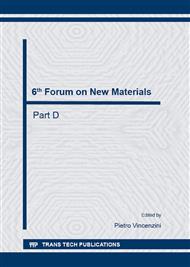p.61
p.67
p.73
p.78
p.89
p.95
p.102
p.108
p.117
Hybrid Energy Harvesting Using Electroactive Polymers Combined with Piezoelectric Materials
Abstract:
Electroactive polymers (EAP) are relatively soft and flexible materials, easy to integrate and able to undergo large deformations by applying an electric field (usually some 10 V/μm). This coupling between strain and electric field (quadratic by nature) as well as particular mechanical properties have already been used advantageously to design actuators. As energy harvesters, EAP have also shown good abilities by providing energy densities up to 0.4 J/g/cycle (generator integrated in a shoe). Moreover, they present some advantages over other techniques as electromagnetic or piezoelectric as they have low resonance frequency response and high elasticity which enable them to be used in situations where large displacements are available. The main drawback of EAP as energy harvesters is that they don't experience direct coupling between strain and electric field, such as the piezoelectric effect. It is therefore essential to use an external electrical polarization source in order to create energy cycles induced by the EAP capacitance variations when it is subject to external stress. The goal of this work is to combine the EAP and piezoelectric materials using the advantages of both, for a hybrid energy harvesting. Different possible configurations and their performances are studied and a comparison with existing techniques is made.
Info:
Periodical:
Pages:
117-123
Citation:
Online since:
October 2014
Authors:
Price:
Сopyright:
© 2014 Trans Tech Publications Ltd. All Rights Reserved
Share:
Citation:


